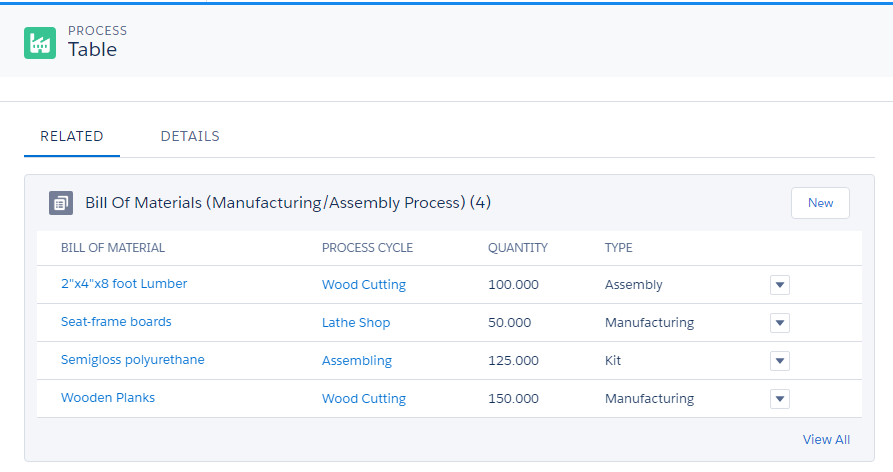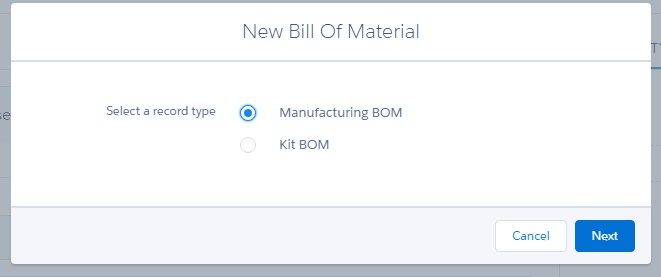Bill of Materials
Estimated reading: 4 minutes
399 views
A Bill of Material (BOM) is the functionality used to set up a production module in an ERP system. A BOM is essentially used to manage a list of components used to produce the end product. The manufacturing of the end product goes through numerous phases of production; a BOM records the details of components needed at various phases of production. Creating a BOM is essential because the correct component must be available during the manufacture of the finished products.
Every BOM record includes the product name, description, quantity, unit of measurement, procurement type, etc. and provides a centralised source of information to the person handling the BOM to manufacture a product.
Aqxolt ERP provides the flexibility to configure various types of Bills of Material depending on the business use for which they are intended.
The BOM can be created for various component types, which can be understood as follows:
Creating Bill of Materials for Manufacturing:
- Select the manufacturing process for which the BOM is required.
- In the related tab, find the Bill of Material (Manufacturing/Assembly Process) and click the “New” button.

- From the New Bill of Material Record Type pop-up, select “Manufacturing BOM” and click the “Next” button.

- Fill in the BOM name, the process cycle in which the BOM component is used.
- Select the phase (stage) of the BOM, then the unit of measurement of the BOM.
- Enter the BOM level, reference designators, part identification number, quantity, BOM (product), and BOM component.
- Select component type, procurement type, and type of BOM.
- Enter the cost details under the “Cost/Billing” section.
- Enter the description and BOM notes if applicable.
- Click the “Save” button to create the BOM record for the chosen manufacturing process.
Fields to note:
| Fields | Description |
| Bill Of Material | Describes the name of the BOM being created |
| BOM Level | Describes the hierarchy of the BOM used in manufacturing the product |
| Phase | Describes the stage at which each BOM is used during the product lifecycle and allows for progress tracking |
| Unit of Measure | Describes the measurement in which a BOM will be used |
| Reference Designators | Provides the details about where the BOM fits in the production lifecycle |
| BOM Notes | Provides the relevant notes to those who closely work with the BOM. Conveys all the information that might be required throughout the product lifecycle |
| Procurement Type | Describes procurement activities, i.e., if the BOM is purchased or made (off the shelf or made to specification) |
| Quantity | Describes the number of BOM products/parts to be used for manufacturing or purchasing |
| Description | Describes the details of each BOM |
| BOM (Product) | Describes the product whose BOM is created |
| Part Identification Number | Describes the number assigned to the BOM part for quick identification |
| Process Cycle | Describes the process cycle in which the BOM part is used |
| Finished Product Amount Delivered | Describes the total amount spent to manufacture the finished product |
| Component Type | Description |
| Alternate Component | Indicates the material may be substituted for the original component. |
| Test Component | Indicates the assembly of material is temporary and will be removed before the final product is shipped; also enables the disassembly operation. |
| Co-Product Component | Represents possible variations of a planned material. If a manufacturing process can yield more than one possible material due to, for example, process, environment or raw material variations, the optimum material is planned for and all other possible outcome materials can be defined as its Co-Product components. |
| By-Product Component | An additional material created during the manufacturing of another material. If a manufacturing process of a material also yields one or more other materials, these other materials can be defined as its By-Product components. |
| Assembly | A parent or component (subassembly) made up of other components. |

